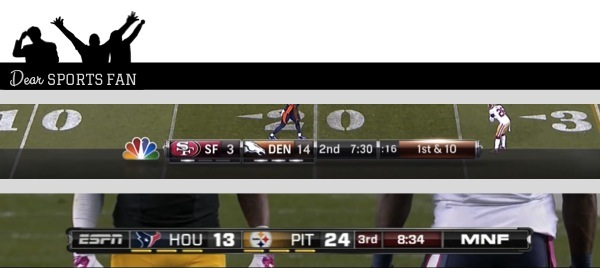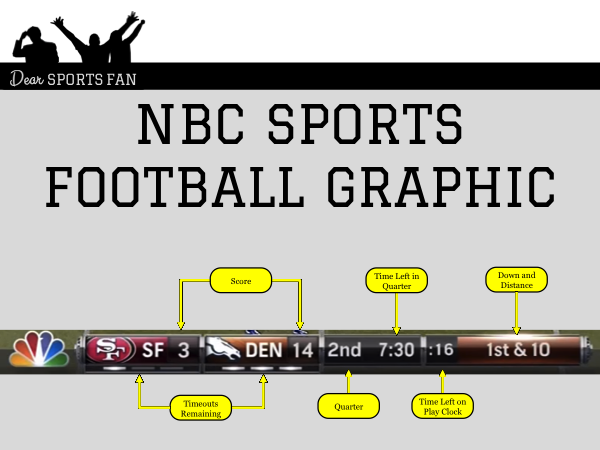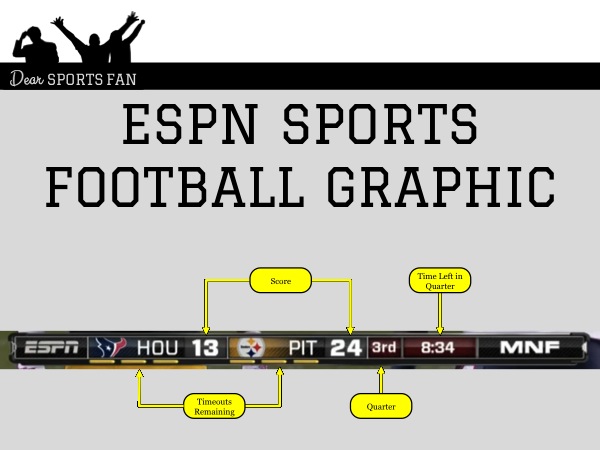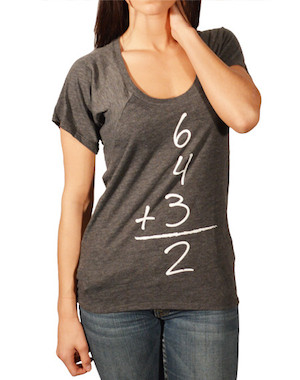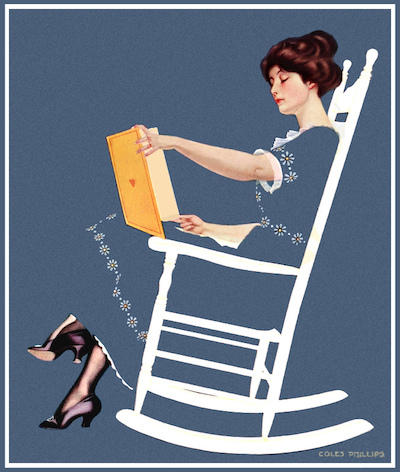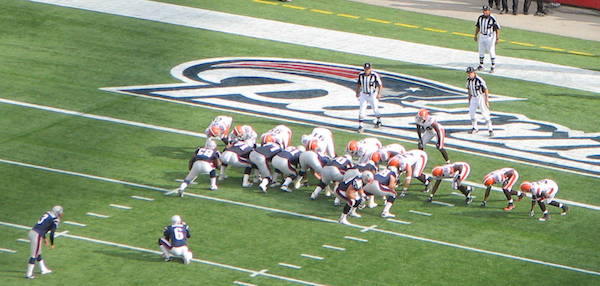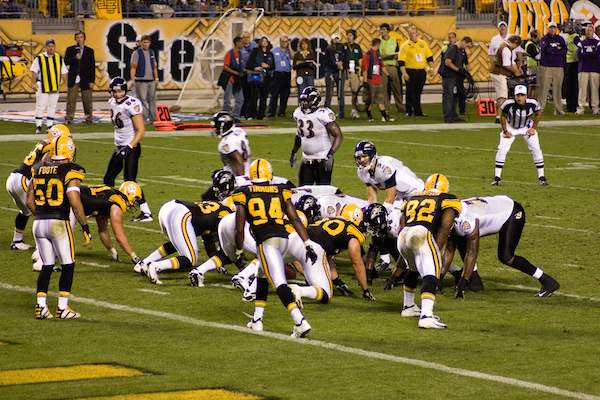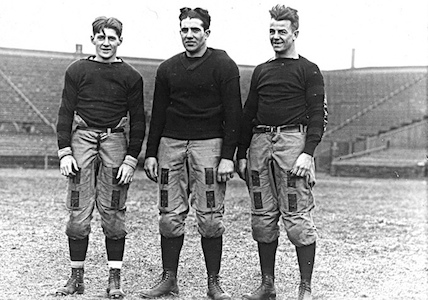Sports is no fun when you don’t know what’s going on. That’s never more true than when a beginner sports fan sits down to watch football with a bunch of die-hards. One of the constant challenges in that scenario are the television graphics that overlay the football game. Every network has a different way of displaying information to the viewer. These graphics are packed with information and mostly well designed but they are never explained. Networks simply assume that viewers will be able to decipher the TV graphics for themselves. Most long-time football fans can but for casual fans, it’s just one more artifact that makes getting into the sport difficult. That’s not how it should be! I took screenshots of the ESPN and NBC NFL Football TV graphics so that I could explain them in detail. Both graphics show exactly the same set of information but they arrange it in different ways. I covered Fox and CBS’s graphics last week. Send me an email at dearsportsfan@gmail.com or leave a comment if you have a particularly problematic graphic for me to unravel.
What information is encoded in these TV graphics?
Score
The score should be one of the easiest things to see from the graphic and indeed, it is.
Timeouts remaining
Each team gets three timeouts per half. Of the four channels that televise NFL football, NBC is the only one that shows timeouts with white colored bars instead of yellow. In our screen captures, both teams have three time outs remaining in the ESPN game but in the NBC game, San Francisco has one timeout remaining and Denver has three.
Quarter
Pretty intuitive, this is just which quarter the game is currently in. Since quarters range from 1st to 4th and so do downs, it’s better to have the quarter close to the time remaining and far from the down and distance.
Time left in quarter
NFL games are organized into four quarters of 15 minutes each. Like basketball and hockey, the clock counts down from 15 as opposed to soccer which counts up to 90.
Down and distance
Down and distance are football shorthand to express the situation of the game. Which of the four chances a team has to move the ball ten yards are they on and how far do they have left to travel? I wrote a whole post on this which I recommend if you, like the person who asked me this question, have always wanted to know what down and distance were but were afraid to ask.
Play time left on clock
Teams with the ball have forty seconds from the end of one play to start running another. This is an important tactical factor because teams can stretch out the time between plays if they are ahead or rush them if they are behind. A penalty is assessed for letting the play clock run out without running a play. For viewers it can also tell them when to look up from whatever else they’re doing so they don’t miss a play. NBC shows this nicely but ESPN doesn’t. It’s possible that a graphic showing the play clock on ESPN comes onto the screen only when it’s close to running out.
What’s missing?
Possession
CBS and Fox both show which team has the ball in their TV graphics. NBC and ESPN don’t. I’m not surprised that, if there were going to be differences, that the two channels that show primetime games would move together. That said, showing which team has the ball is really useful. I’m not sure why NBC and ESPN omit it from their graphics.

